As I mentioned in my first Trash Talking post, one of the biggest environmental challenges facing Perú, apart from Climate Change, is trash management.
Simply put, Perú produces a lot of trash (not as much as the U.S. though) and does not have the infrastructure in most places to properly dispose of it. Consequently, scenes like the one below are extremely common in many parts of Perú.
But, there is a lot that can be done to address the trash problems. One really awesome way to manage trash in rural locations, is to reuse it for types of construction.
Wait…trash as a construction material??? What do you mean?
Well, I’m talking about Eco-Ladrillos (Eco-Bricks) which are amazing. So what is an Eco-Ladrillo? Basically, Eco-Ladrillos are plastic bottles that are filled to the max with non-decomposable trash waste such as plastic wrappers, plastic packaging, plastic bags, etc. until they become a firm, durable construction material. In creating an Eco-Ladrillo, the key is compaction; you have to put the trash inside, smash it down with a rod, then add some more trash and some more smashing until you have a firm, trash filled plastic bottle. Below is a promotional photo for Eco-Bricks listing all their benefits: reduce contamination, minimize trash waste, serve as an insulating material, etc.
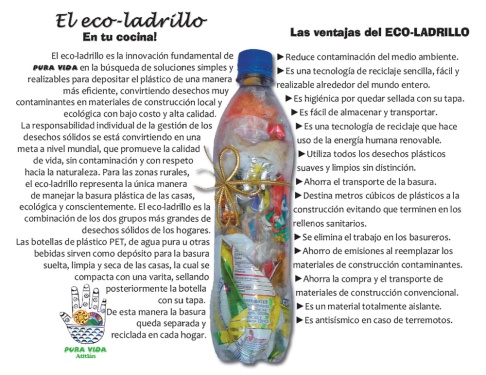
Now, I learned about Eco-Bricks during training and I have been obsessed ever since, hoping that I would get the chance to use them during my service in Caraz. Well, that opportunity finally came when I became involved in development of the Environmental Plan for one of the schools I work with, Micelino Sandoval Torres. In creating the environmental plan, we decided to address various issues: poor trash management, lack of green spaces, lack of cleanliness in the bathrooms, etc. When we began to talk about trash management, I made sure to give a pitch about Eco-Ladrillos to the professors involved in the plan’s creation, and fortunately a few were as interested as I was.
So with 2 teachers we made a plan to create a bunch of benches in the school in the school using only cement and trash.
The project started back in August when the two teachers began teaching their students how to make eco-ladrillos, and giving each student the assignment to make 10 with 2 months. But, we didn’t just stop at the students, we also got the parents involved. On September 1st, we had a session with some padres de familia (parents of the students) to teach them how to make Eco-ladrillos. It was really fun, and each parent was tasked in making 2, which their kids would later bring to school.
From there, the teachers took over and kept reminding their students to make more and more Eco-Ladrillos. Until we had a decent amount, we wouldn’t be able to make anything.
In mid-October, we had a big session with a few different classes of students in second year of secondary school to address quality control of the Eco-ladrillos; the students would pass me an Eco-ladrillo and I would evaluate whether it was up to snuff (think Willy Wonka). The good ones were put into costales (basically potato sacks) and the bad ones (too soft, not enough trash, etc.) were returned to students who got to work shoving more plastic bags and plastic wrappers inside.
By the end of the session, we had approximately 240 Eco-Ladrillos which were good to go. In order to complete our bench, we estimated that we needed about 300, so we were just a few short. Over the next 1.5 weeks, we had the students at full chamba (full work) to create more Eco-Ladrillos out of all of the remaining trash we had collected.
Finally, after starting the project in August, the construction day came on October 27, 2016. My counterpart teachers picked a class of seniors to assist with the construction, and then we were off. Like most activities, things didn’t go perfectly; we started late, the “sand” we had to mix with the cement was too large, and the students fooled around quite a bit. However, with the students’ construction expertise, lots of patience, and lots of trash, we were able to create an AWESOME bench.
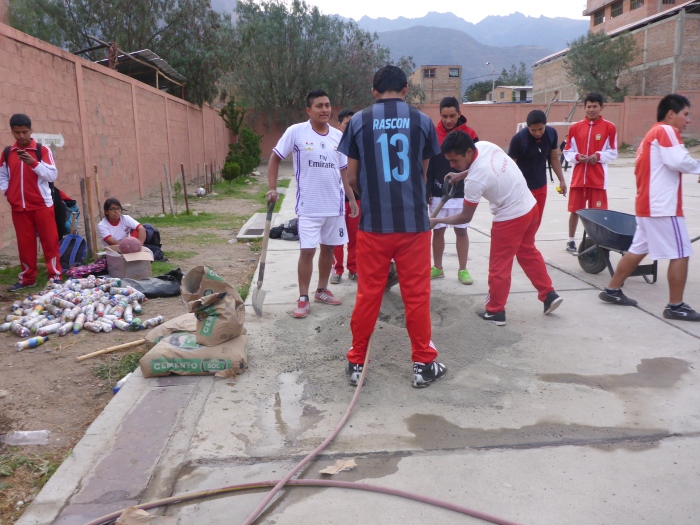
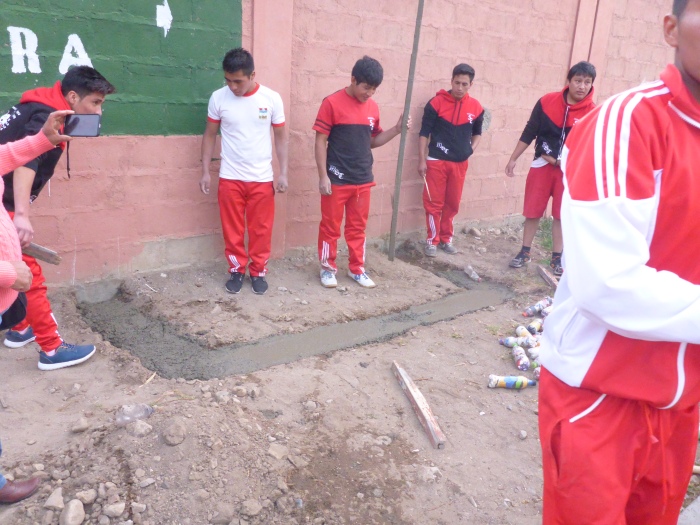
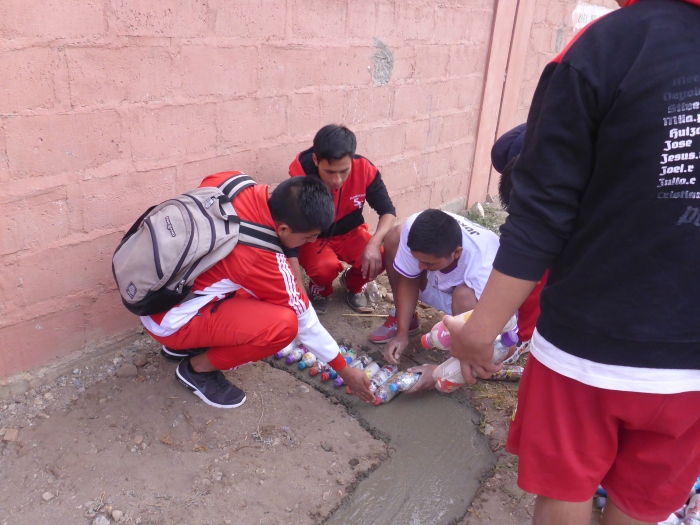
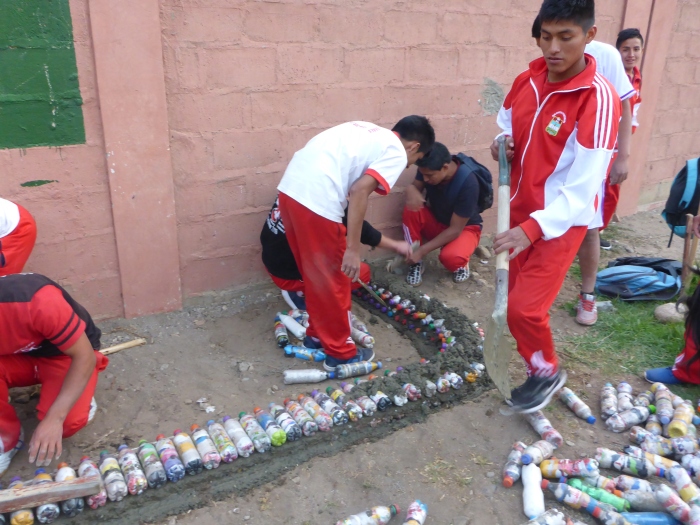
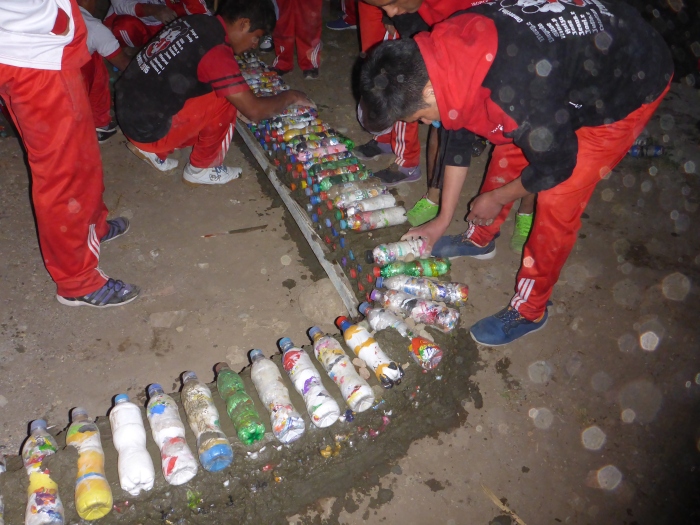
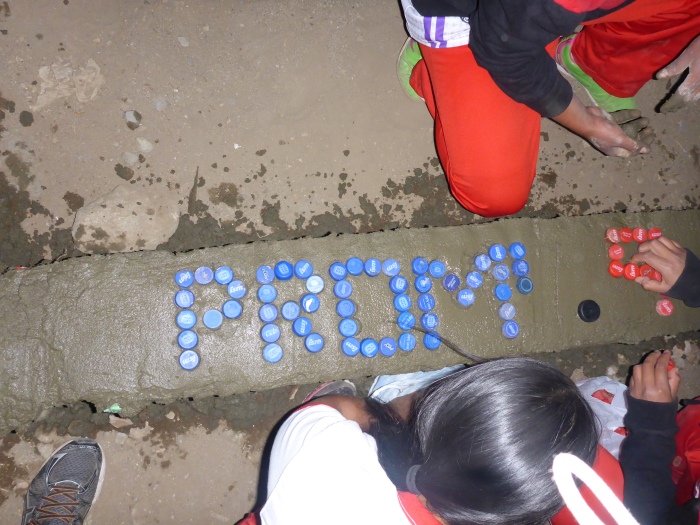
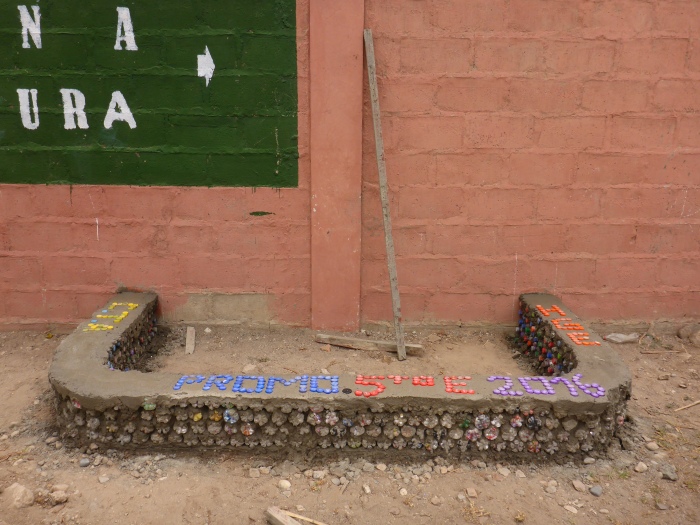
And there you have it, a bench made out of trash! In the end, the bench includes around 300 Eco-Ladrillos (I still need to count them) across five rows, amounting to about 60 kilos (132 pounds) of trash re-purposed. The bench has since been improved slightly; the front face has been smoothed over with cement and two trees were planted inside. As soon as I can snap a photo of the finished product, I will be posting it up in here.
And so, after 3 months of work, our first dive into the world of Eco-Ladrillos was a success! The teachers and students all had a fantastic time, and the plan is to continue the work when school starts again next March. The dream is that for the following year, EVERY class in the high school (~950 students) will learn how to make Eco-Ladrillos and will have to contribute at least 2 so we can continue to create more of our beautiful, trash-filled benches. And who knows, maybe we’ll even create something else out of Eco-Ladrillos, such as chess tables. Honestly, the possibilities are endless since I’ve seen walls, bathrooms, and even school rooms made out of these materials.
Now, even though Eco-Ladrillos are touted as a rural solution to trash management, the technology should be limited to Perú, and other countries who struggle with trash management. I’ve come to realize that in the U.S., we produce SO MUCH waste, especially plastic waste, and so I would love to see this technology employed back home in the States. Yes we have great trash collection in the U.S., but if we try to follow the 3Rs (Reduce, Reuse, Recycle), we should constantly seek solutions for how to reuse our waste before we taking the easy route of just throwing it in the trashcan.
Well, I hope you enjoyed today’s installment of Trash Talking, and that some of you readers (especially other Peace Corps Volunteers), will take initiative and see the feasibility of using Eco-Bricks in your communities.
Until next time,
MGB





















